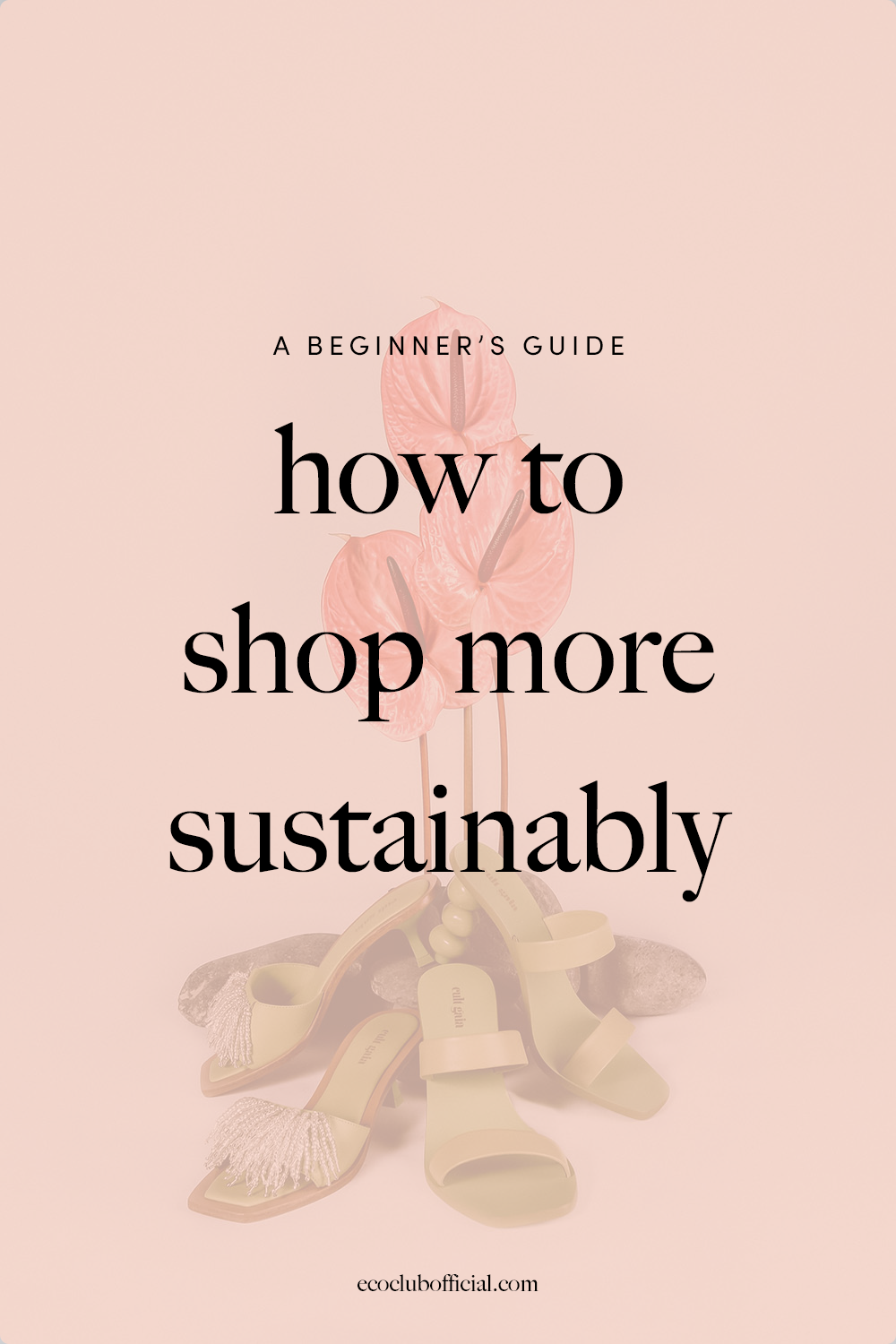I know how alluring sites like SheIn and BooHoo can be, especially when you see influencers doing huge clothing hauls with each item priced at a fraction of what they would be in most stores. But while you may save a few bucks up front, these companies cost you more in the long run with their cheap fabrics and shoddy craftsmanship. They also cost the environment via the carbon footprint of such unsustainable fast fashion practices.
While those are the most obvious offenders, with greenwashing on the rise, it can be hard to distinguish what’s actually an eco-friendly purchase from one that’s framed that way to profit a company. That’s why I’ve compiled this list of parameters to look out for when trying to shop more sustainably!

photo by Trình Minh Thư
Get familiar with fabrics
We’re past our polyester days, babes. Cheaper materials like polyester and rayon are cost effective for companies, but non-renewable, and involve the usage of countless harmful chemicals like phthalates which can be absorbed through skin contact (yikes).
Instead, look for eco-friendly fibers like certified organic cotton, TENCELL lyocell, or recycled/ repurposed materials (think deadstock fabric or vintage items). These materials use less water to produce, and work towards creating a circular lifespan for your clothes instead of condemning them to a landfill for all eternity.
Shop small
One of the reasons environmentally detrimental fashion slips through the cracks is because of how obscure the supply chain is. Companies count on you not digging deep into their manufacturing process, and inquiring about their practices, to downplay how large their carbon footprint really is.
Now, not all big companies are bad; obviously some have founded their brand on sustainability and transparency. But if you want to reduce your own footprint, consider shopping small. When you shop small, chances are the creator not only sources locally, but they view their process and suppliers as a point of pride. They’re also more open to answering questions about their sustainability status and can be more easily swayed by consumer demand for eco-friendly practices.
Look for transparency
The tricky thing about greenwashing is that a company will use all the bells and whistles and trigger words to make you *think* you’re making a sustainable purchase. But a truly sustainable company will be upfront about their process; look for sustainability reports, statistics, and information on their factories and worker conditions.
This does involve some discernment on your part, but trust your gut! If a company seems too good to be true, it probably is.
Keep an eye out for certifications
When you do shop at larger retailers, keep an eye out for their involvement in big sustainability initiatives. If Linda on Instagram is hand-making your top, with clear documentation of the process, it’s probably safe to say she’s not exploiting sweatshop workers or using toxic chemicals.
But for larger corporations, looking for certifications like Fair Trade Certified or Oeko-Tex compliant adds a layer of assurance to their proclaimed eco-friendly practices and sustainability. Their marketing language may be difficult to discern the truth from, but these certifications at the very least express that a company is willing to jump through a few hoops to ensure a quality product.
Recycle!
This is kind of a three-tiered system:
- First, choose a recycled wardrobe by shopping at secondhand stores or vintage shops. Giving used goods a new home is a great way to keep them out of landfills, and since fashion trends always inevitably repeat themselves (hi Y2K) it can also be great for scoring some unique finds.
- When you’re done with a piece, some sustainable companies will actually take your well-loved articles of clothing and recycle them for use in their own manufacturing. Companies like Knickey will even go as far as rewarding you with store credit or free clothes for your worn out goods (in Knickey’s case, a pair of free organic cotton undies). And of course, there’s plenty of local areas who would appreciate a secondhand donation.
- For clothes that are super worn (can’t be used again), you can locate the nearest textile recycling center near you. Most counties have a list of how to dispose of “hard to recycle” items like textiles, plastic bags, batteries and lightbulbs, etc. on their websites. It just takes a few minutes to Google and diverts serious amounts of waste from the landfill!
Lastly, be kind
A key takeaway I’d like to share from all of this is to be kind to yourself. Developing a more sustainable lifestyle takes time and practice. You won’t get it right every time, but as long as you’re making an effort, there’s no shame in trying to be better.
How will you shop more sustainably this year? Follow us on Instagram for more tips!
your two cents